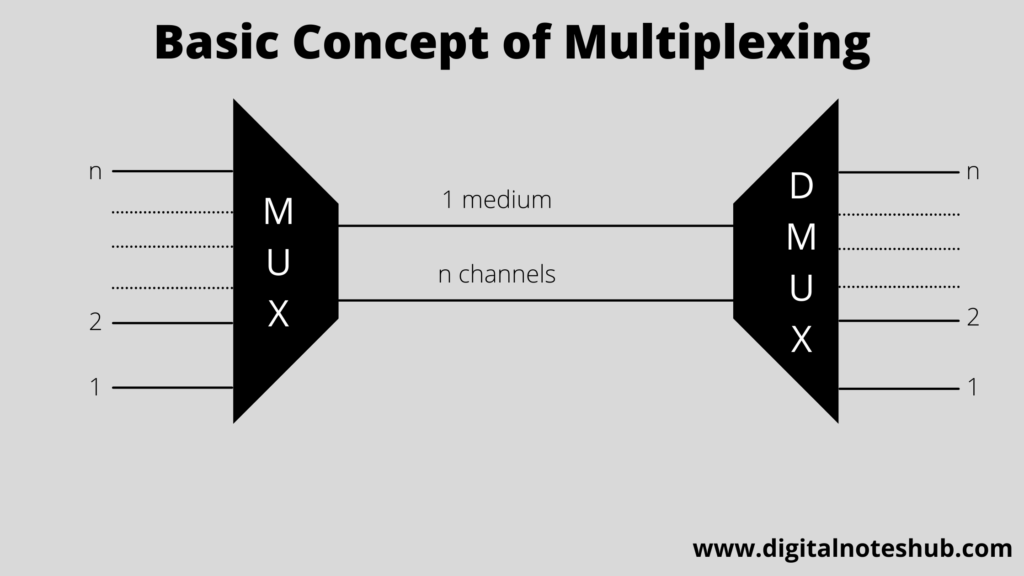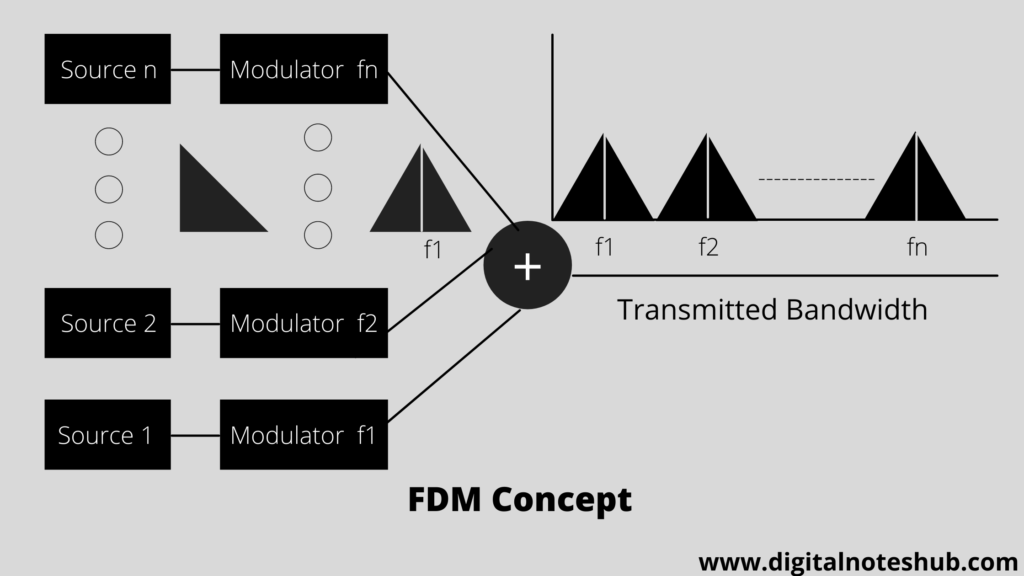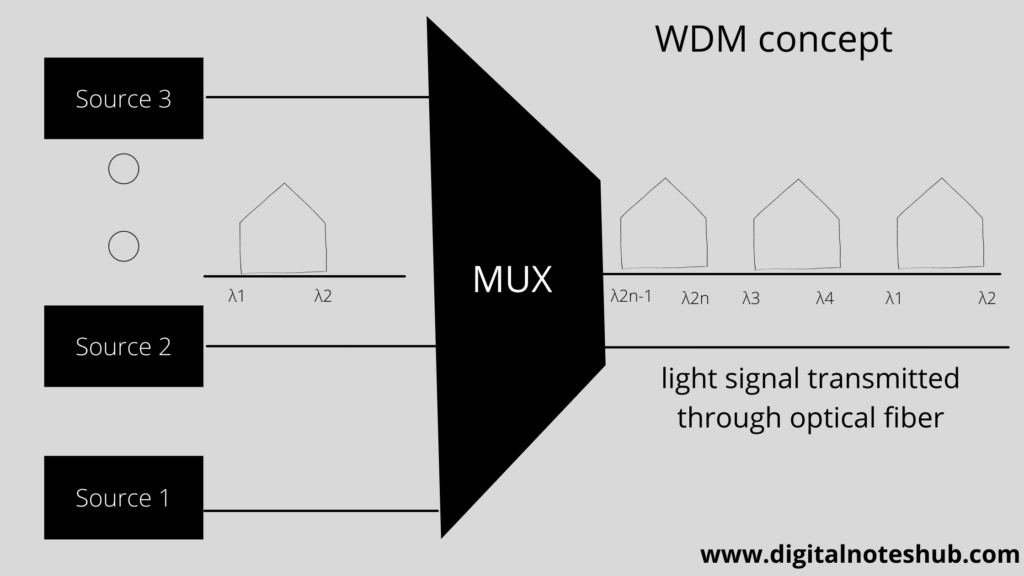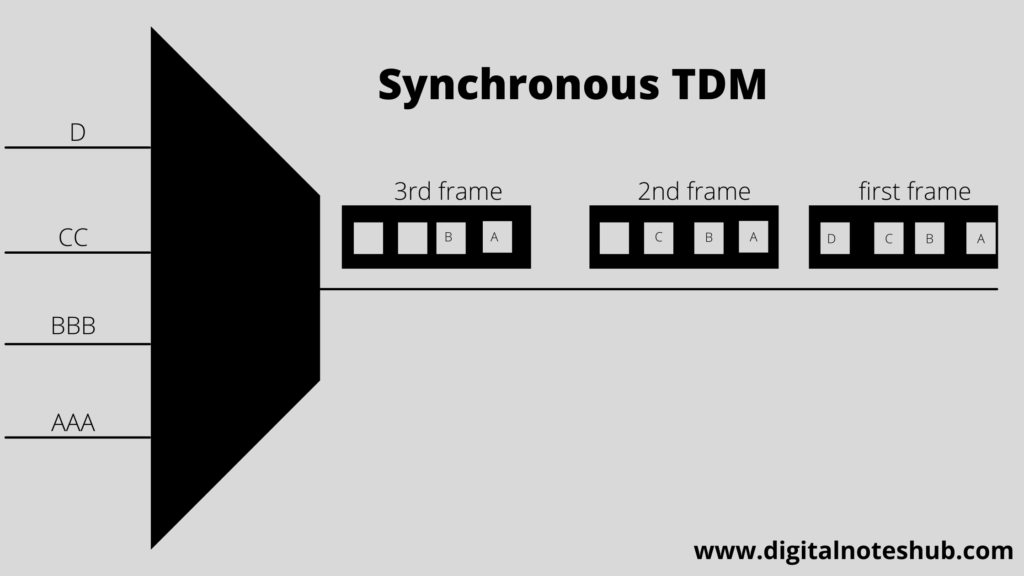In this tutorial, you’re going to learn what is multiplexing in computer networks and types FDM, TDM and WDM with the help of suitable diagrams and examples.
Let’s get started, happy learning!
Multiplexing in Computer Networks?
Multiplexing in computer networks is a technique that allows the simultaneous transmission of multiple signals across a single data link.
The multiplexer combines data from ‘n’ input lines and transmits them through a single high capacity link. And input lines are demultiplexed at the other end and delivered to the appropriate output lines.
The following diagram shows the basic concept of multiplexing in computer networks. Multiplexer(MUX) is used at one end and, a demultiplexer (DEMUX) is at another end.
The multiplexer combines the n input lines and transfers from one medium and the demultiplexer separate the lines once again and delivered them to output lines as shown in the following multiplexing diagram.

Types of Multiplexing Techniques
Mainly two types of multiplexing techniques are used in computer networks as given below:
- Analog Multiplexing
- Digital Multiplexing
Analog Multiplexing
The multiplexing which involves the analog signals is called analog multiplexing. Further analog multiplexing in computer networks is divided into two parts:
- Frequency division multiplexing(FDM)
- Wavelength division multiplexing(WDM)
Frequency Division Multiplexing(FDM)
In FDM, the available bandwidth of a single physical medium is subdivided into several independent frequency channels.
The Independent message signal is translated into different frequency bands using modulation techniques. These frequency signals are combined by a multiplexer circuit to make a composite signal.
It is the most popular type of multiplexing technique. Frequency division multiplexing(FDM) is used in radio and TV transmission. The following diagram shows the basic concept of FDM.

Wavelength Division Multiplexing(WDM)
WDM works the same as FDM, except only one thing i.e, the multiplexing and demultiplexing involve light signals. And the light signals are transmitted through fibre-optic channels.
The idea of wavelength division multiplexing is the same as of FDM, we are combining different frequency channels. However, the difference is that the frequencies are very high in WDM. It is designed to utilize the high data rate capability of fibre optic cable.
The following diagram shows the concept of wavelength division multiplexing in computer networks.

Digital Multiplexing
It represents the data in discrete bits of information and it means data is in the form of packets or frames. An example of digital multiplexing is time-division multiplexing.
Time Division Multiplexing (TDM)
In FDM, all signals operate at the same time with different frequencies, but in time division, all signals operate at the same frequency but at different times.
TDM is the baseband transmission system, where an electronic commutator sequentially samples all data sources and combines them to form a composite baseband signal.
This signal travels through the media and is being demultiplexed into appropriate message signals by the corresponding demultiplexer at the receiving end. The incoming data from each source is briefly buffered.
The following diagram shows the concept of time-division multiplexing in computer networks.

Types of Time Division Multiplexing
There are two types of time-division multiplexing (TDM) as follows:
- Synchronous TDM
- Statistical TDM
Synchronous TDM
It is called synchronous because each time slot is preassigned to a fixed source. The time slots are transmitted irrespective of whether or not the sources have any data to send, hence the channel capacity is wasted in synchronous TDM.
Statistical TDM
One drawback of the TDM technique is that many of the time slots in the frame are wasted. Because, if a particular terminal has no data to transmit at a particular instant, then an empty slot will be transmitted.
An efficient alternative to this is statistical TDM. It dynamically allocates time slots to separate input channels, thus it saves the channel capacity.
Was This Guide Helpful?
Let me know your thoughts in the comment section and if you have any queries then feel free to ask in the comments.
Additional Computer Networks Notes
